What is marketing orchestration?
Published on April 01, 2025/Last edited on April 01, 2025/16 min read


Team Braze
Marketing today feels more complex than ever. Customers expect seamless, personalized experiences across every channel, and brands that can’t deliver risk losing engagement—and revenue. But managing multiple touchpoints, unifying data, and ensuring messages feel connected isn’t easy. That’s where marketing orchestration comes in.
Marketing orchestration is all about delivering experiences that are intentional, timely, and relevant—bringing together data, teams, and technology to create a more cohesive customer journey. Whether it’s automating cross-channel campaigns, improving audience segmentation, or aligning marketing and sales teams, orchestration makes it possible to deliver smarter, more personalized experiences at scale.
In this guide, we’ll explore what marketing orchestration is, how it works, and why it’s an essential part of a marketing strategy for modern brands. Plus, we’ll look at real-world examples of how companies like Coches, BlaBlaCar, Immobiliare.it, and Picklebet have used Braze to streamline their marketing, improve engagement, and drive measurable results.
Contents
What is marketing orchestration?
What marketing orchestration is not
Benefits of marketing campaign orchestration
How does marketing orchestration work?
5 Real-world examples of marketing orchestration in practice
Challenges of marketing orchestration campaigns and how to overcome them
Marketing orchestration platforms, tools, and software
FAQs on campaign orchestration
What is marketing orchestration?
Marketing orchestration is all about bringing real-time customer data together in one place to create seamless, personalized experiences across channels.
By unifying data from sources like a company’s website, app, and social media, marketers can launch high-impact cross-channel campaigns that feel timely, relevant, and connected—no matter where individuals engage in the customer journey.
With this data-driven approach brands can even look at predictive marketing, where they can use AI to better understand how customers are behaving and what strategies they should use to influence their behavior. Predictive models reveal nuances and patterns in data that at one time, needed a highly skilled data analytics team to uncover.
What is account-based marketing orchestration?
Account-based marketing (ABM) is a highly-targeted approach that focuses on engaging a single, high-value lead with personalized, data-driven messaging.
For B2B companies offering specialized solutions, the ideal customers may be a select few businesses worldwide. Instead of casting a wide net with broad ads and hoping the right people take notice, ABM helps marketers to zero in on their most promising prospects—delivering tailored, research-backed outreach that speaks directly to their needs and maximizes conversion potential.
Account-based marketing orchestration is the process of running a fully coordinated, data-driven campaign where messaging, targeting, and timing work together seamlessly to maximize impact and drive the best possible results.
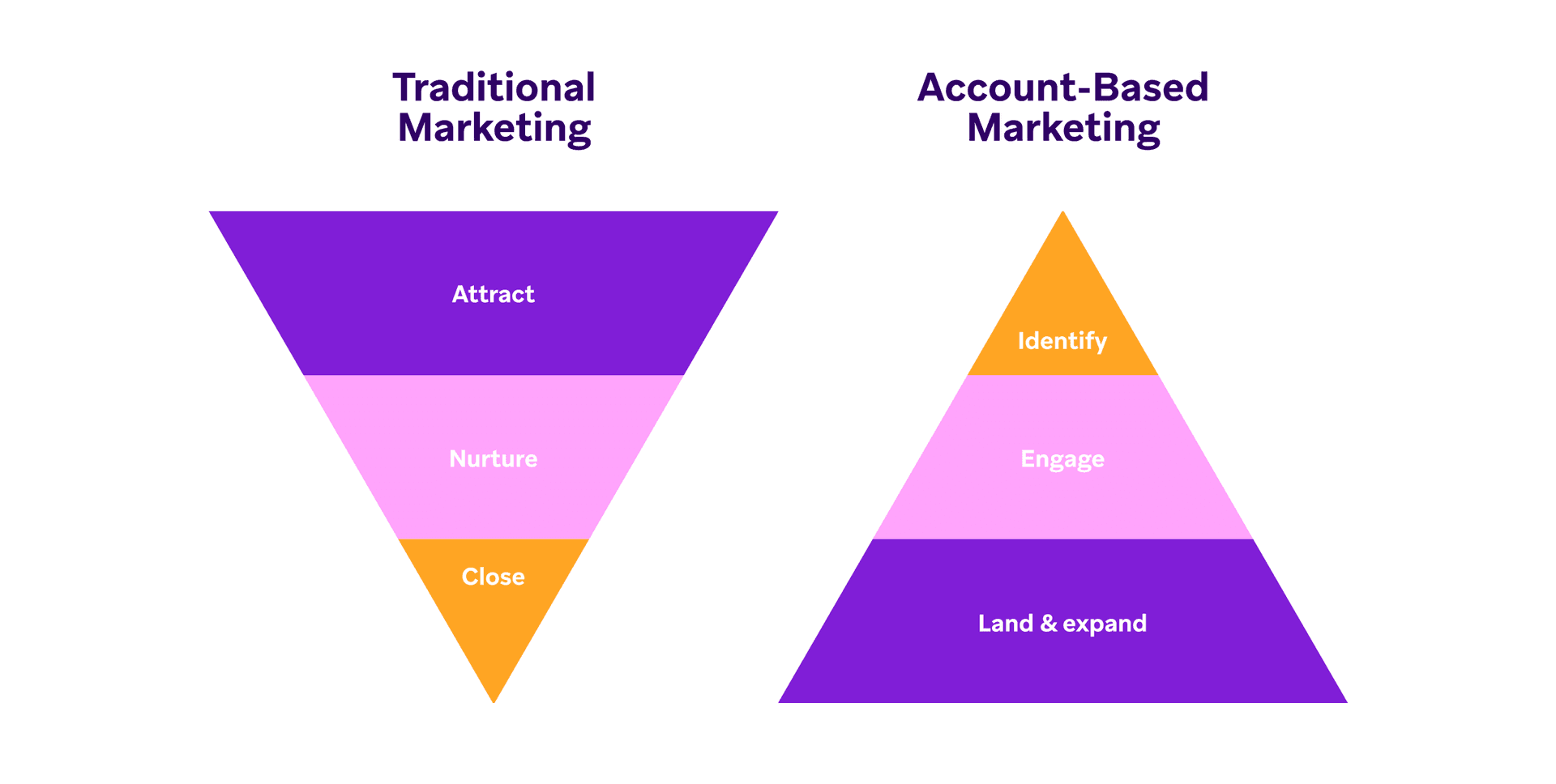
What marketing orchestration is not
Marketing orchestration isn’t just about running campaigns across different channels. It’s about making sure every interaction feels intentional, connected, and relevant to the customer journey.
Not just marketing automation
Marketing automation helps execute campaigns, but orchestration goes further. It means that touchpoints—across email, push, in-app, and beyond—work together strategically to guide customers through their journey.
Not a one-time campaign
Orchestration isn’t about a single campaign or one-off effort. It’s an ongoing process of managing customer interactions across multiple touchpoints to build long-term engagement.
Not a siloed approach
Traditional marketing often treats each channel separately. Orchestration breaks down those silos, aligning teams, tools, and messaging to deliver a consistent experience.
Not just about conversions
Sales matter, but orchestration isn’t just about driving immediate purchases. It’s about fostering meaningful, lasting relationships with customers by delivering value at every stage of their journey.
With marketing orchestration, every message, every channel, and every moment is connected—so brands can engage customers in a way that feels seamless, personal, and impactful.
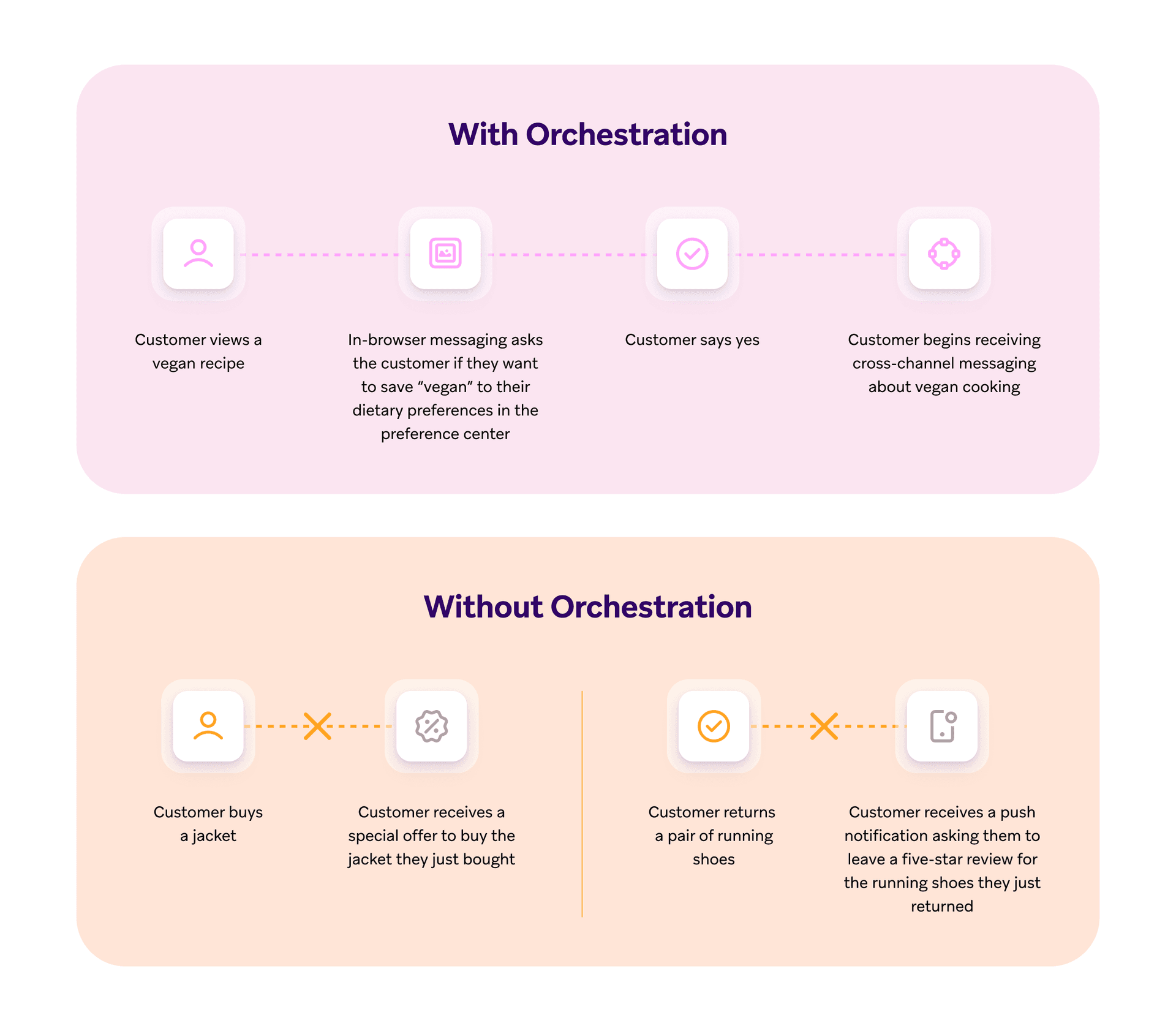
Benefits of marketing campaign orchestration
Today’s customers expect personalized, seamless experiences—and brands that can’t deliver risk losing their loyalty. Too often, disconnected tools and siloed data create friction, leaving customers with generic or poorly timed interactions.
The benefits of marketing orchestration help you solve this in the following ways:
Delivering relevant messaging at the right time
Nothing frustrates customers more than seeing an ad for something they’ve already bought or receiving irrelevant emails. Orchestration means your messaging is timely, personalized, and aligned with each customer’s journey—building trust and long-term loyalty.
Maximizing efficiency and reducing costs
When your campaigns are precisely targeted and automatically optimized, you eliminate wasted spend and effort. When orchestration is done right, it can streamline workflows, reduce manual data entry, and minimize human error, so your team can focus on what really matters—creativity and strategy.
Boosting campaign performance
Integrated tools mean better audience segmentation, smarter campaign execution, and improved outcomes. With orchestrated marketing, you reach the right people with the right message—leading to higher engagement and better results.
Strengthening team collaboration
When teams work in silos, mistakes can happen. Orchestration aligns your entire organization, reducing miscommunication and duplicated efforts so teams can work smarter and more strategically.
Gaining deeper customer insights
With all your tools connected, you get a clearer picture of customer behavior and preferences. This leads to more precise targeting, stronger engagement, and better business outcomes.
With marketing orchestration, every interaction feels intentional, relevant, and valuable, so customers keep coming back.
How does marketing orchestration work?
Now that you understand the power of marketing orchestration, let’s break down how it works in practice—and how it helps brands create more connected, high-impact campaigns.
Unify your data for a complete customer view
Marketing orchestration starts with bringing all your customer data together. To create seamless, personalized experiences, brands need to connect and centralize data from multiple sources—CRM systems, eCommerce platforms, social media, and more. But when insights are scattered across disconnected tools, it’s nearly impossible to deliver relevant, timely interactions.
Without a single, real-time view of each customer, brands struggle to engage audiences in meaningful ways. That’s why many companies rely on customer engagement platforms like Braze that seamlessly integrate with partners across many different tech and strategy solutions.
By eliminating data silos and ensuring teams have accurate, up-to-date insights, brands can build unified customer profiles based on real behaviors, preferences, and pain points. And with identity resolution, messaging becomes even more precise—boosting engagement, loyalty, and revenue.
Build cross-channel marketing strategies
With a 360-degree customer view, brands can develop smarter marketing strategies that reach the right people at the right time—on the channels they actually use.
When marketing orchestration is done right, campaigns feel seamless and intuitive. Your tools work together, your messaging is relevant, and your campaigns perform better. A fully integrated approach means marketing and advertising efforts complement each other, creating a more consistent and individualized customer experience.
But orchestration isn’t just about having better data, it’s about activating that data. With the right tools, brands can identify and reach customers who may have been hidden in fragmented datasets. This helps to maximize your media investment so that marketing dollars are spent on the right audience.
Guide customers through the journey
Once you understand your customers, the next step is mapping out their buyer’s journey. This means identifying key touchpoints—both online and offline—and using that knowledge to craft a frictionless path to purchase.
That could mean combining automated emails with digital ads, sending a push notification at a critical decision-making point, or triggering personalized recommendations based on past behavior. It could also mean using AI to personalize every step of the journey, so each customer receives the message that’s most likely to resonate with them.
Align across teams
Customer engagement is a team sport. One of the biggest advantages of marketing orchestration is that it aligns every team that interacts with customers—not just marketing, but also sales, customer support, and beyond.
Customers expect a consistent experience across every touchpoint. The messaging they see in an ad should match the support they receive on a call. The onboarding emails they get should feel connected to the in-app guidance they experience. This level of cohesion is only possible when teams share the same data and insights.
By breaking down internal silos and automating key processes, brands not only improve the customer experience—they also drive operational efficiency. With real-time data accessible across the organization, teams can eliminate manual errors, reduce redundant work, and focus on delivering value at every interaction.
5 Real-world examples of marketing orchestration in practice
Want to see what successful marketing orchestration looks like in real life? Here’s how five companies worked closely with Braze to reach new heights.
Driving better customer connections with marketing orchestration at Coches
Since 2009, Coches has been committed to making mobility accessible, fair, and environmentally responsible for everyone. As a leading online automobile marketplace based in Spain, the company helps people find the right mobility solution for their specific needs—whether they’re buying, selling, or exploring their options.
By leveraging a connected network of professionals, advanced technology, and deep industry expertise, Coches delivers personalized recommendations that align with users’ lifestyle.
A strong customer engagement strategy and marketing orchestration is essential to bringing this mission to life. The team understands that sustainable growth depends on both acquisition and retention.
While attracting new customers is always important, long-term success comes from keeping them engaged. And to do that, Coches puts its users at the heart of every decision—so their experience is seamless, relevant, and rewarding at every touchpoint.
The problem
Coches noticed users disengaging at various points in their journey, so the team set out to create a more connected and seamless experience that kept users engaged throughout the entire lifecycle.
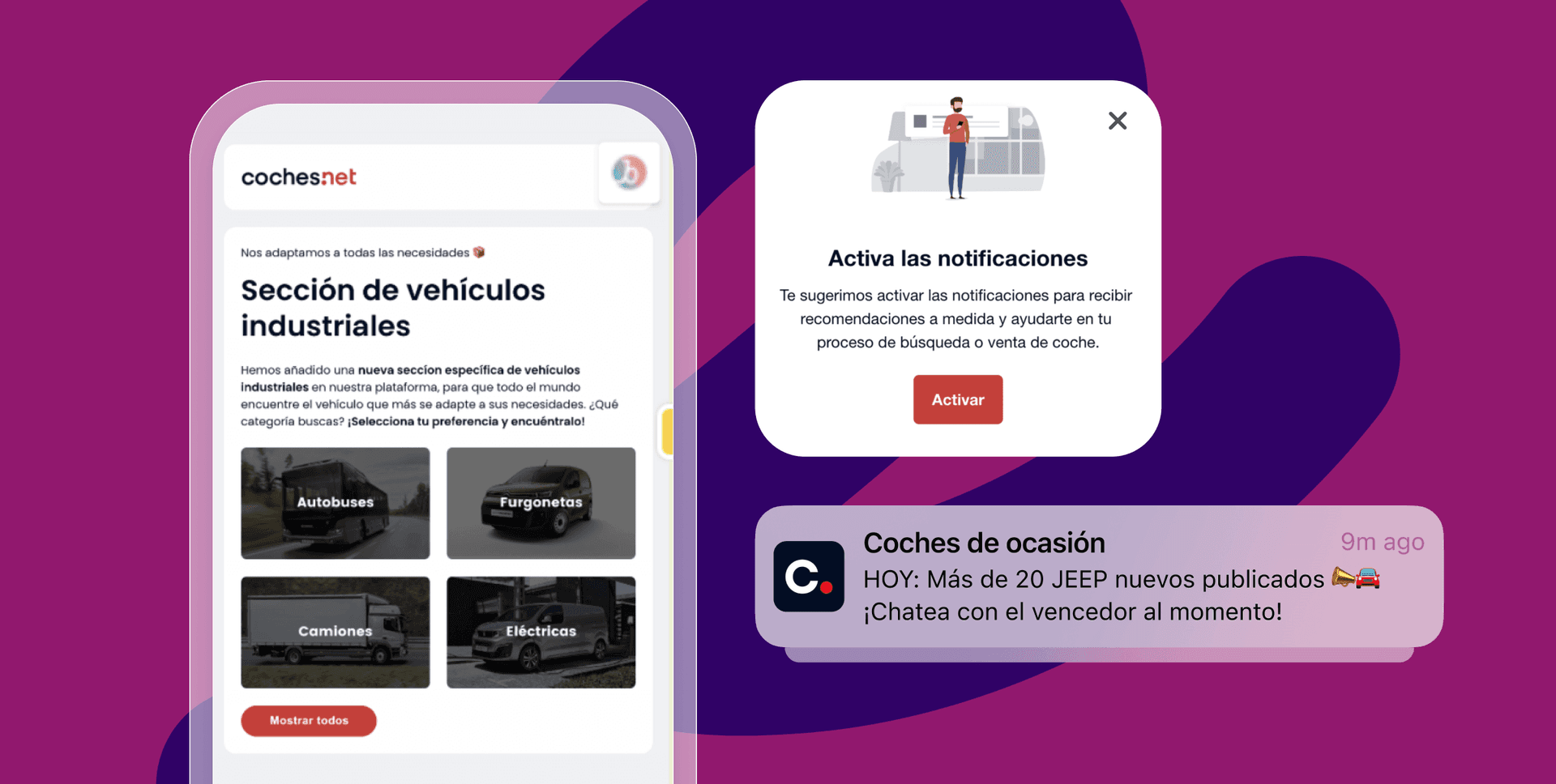
Strategy
Coches designed personalized onboarding and reactivation journeys using Braze Canvas, a no-code journey orchestration tool that allows marketers to seamlessly build and optimize customer experiences.
Results
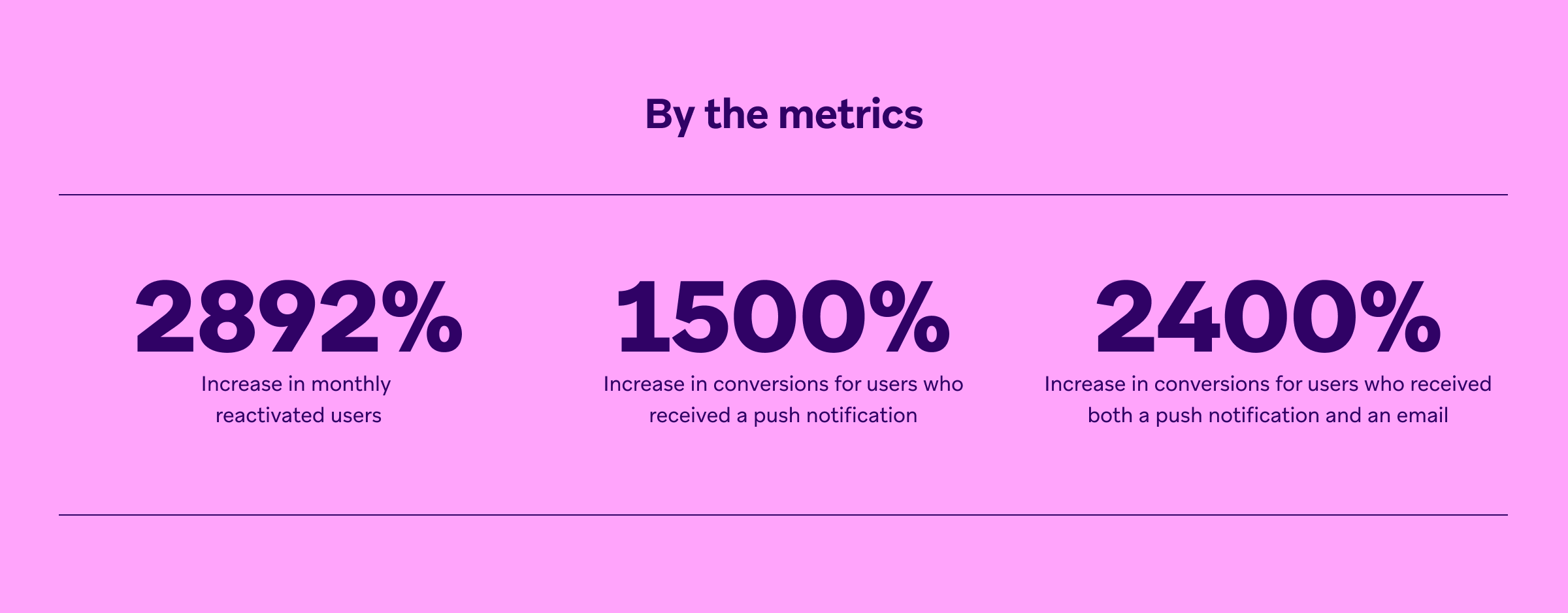
Coches’ personalized onboarding flow drove a 352% increase in ad replies and a 533% surge in ads published. Their reactivation journey delivered even more impressive results, with a 2,892% increase in monthly reactivated users.
Users who received a push notification saw a 1,500% boost in conversions—including key actions like saving favorites, replying to ads, or reading articles—while those who received both email and push experienced a 2,400% lift in conversions.
How BlaBlaCar increased bookings by 30% with personalized messaging and cross-channel automation
BlaBlaCar is redefining community-based travel, connecting over 100 million members across 22 global markets through its ridesharing and bus network. With a forward-thinking approach, the company uses smart technology to seamlessly match travelers looking to share a ride—making transportation more efficient, affordable, and environmentally friendly.
The problem
BlaBlaCar helps passengers plan their trips with ease, but the team noticed that some users were dropping off at key moments in their journey—leading to missed booking opportunities. To create a more seamless experience and improve conversions, they needed a strategy that kept high-intent users engaged.
Strategy
To quickly build and optimize complex user journeys, BlaBlaCar turned to Canvas to automate cross-channel messaging and create an abandoned cart program exactly as they imagined it. They used rich personalization and sharp automation so that every interaction was timely, relevant, and impactful.
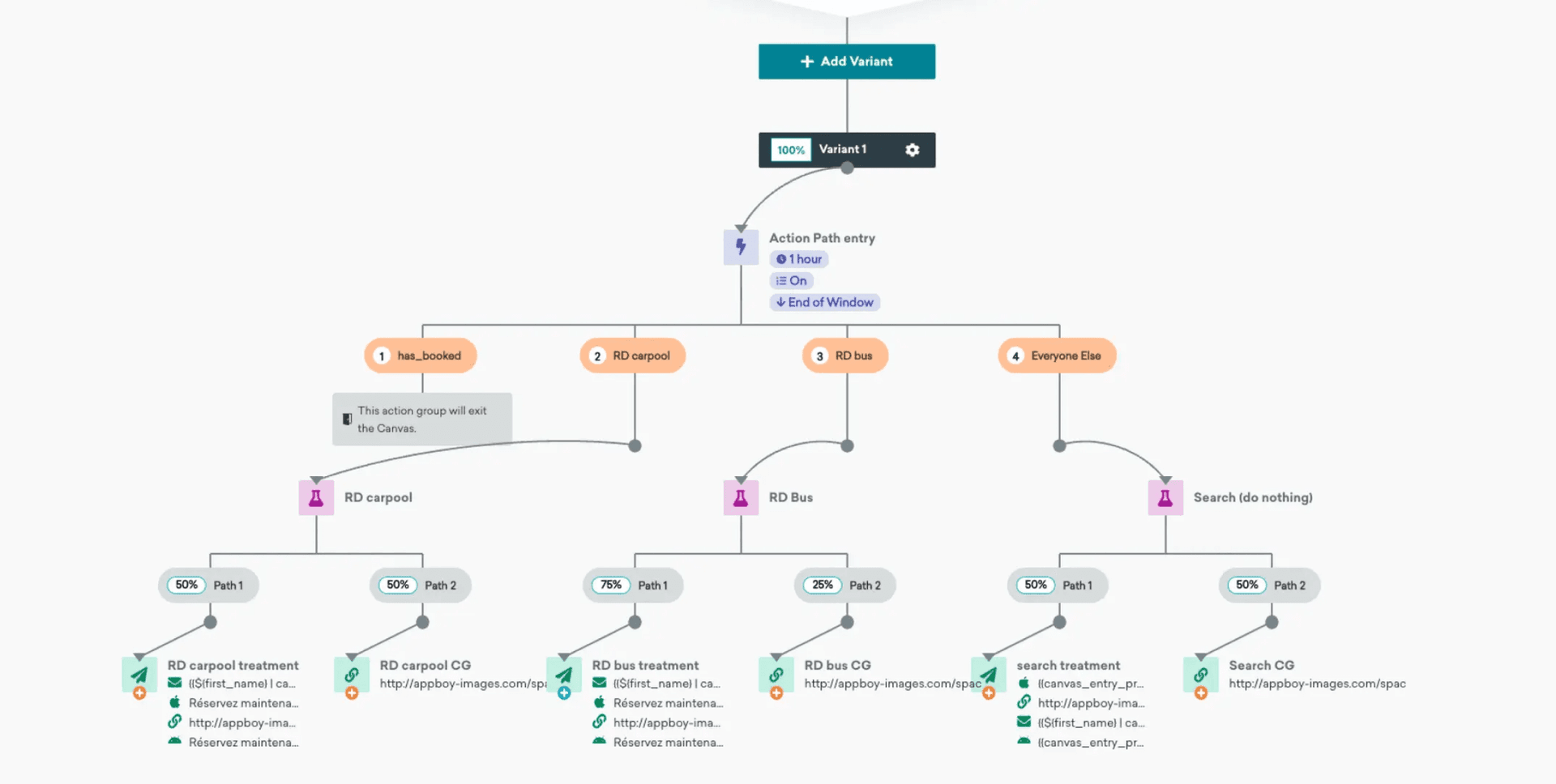
Action paths and audience evaluation helped save the team time as they could spend less time on manual testing and quality assuring. With email, push notifications, Content Cards, in-app messages, and webhooks—the team aimed to re-engage users, streamline their experience, and increase bookings.
The Results
BlaBlaCar successfully increased bookings from their target audience. With the use of Canvas’s experiment path component to test and refine their approach, they proved that personalized emails and a flexible journey orchestration could drive higher engagement and conversions, compared to generic messaging.
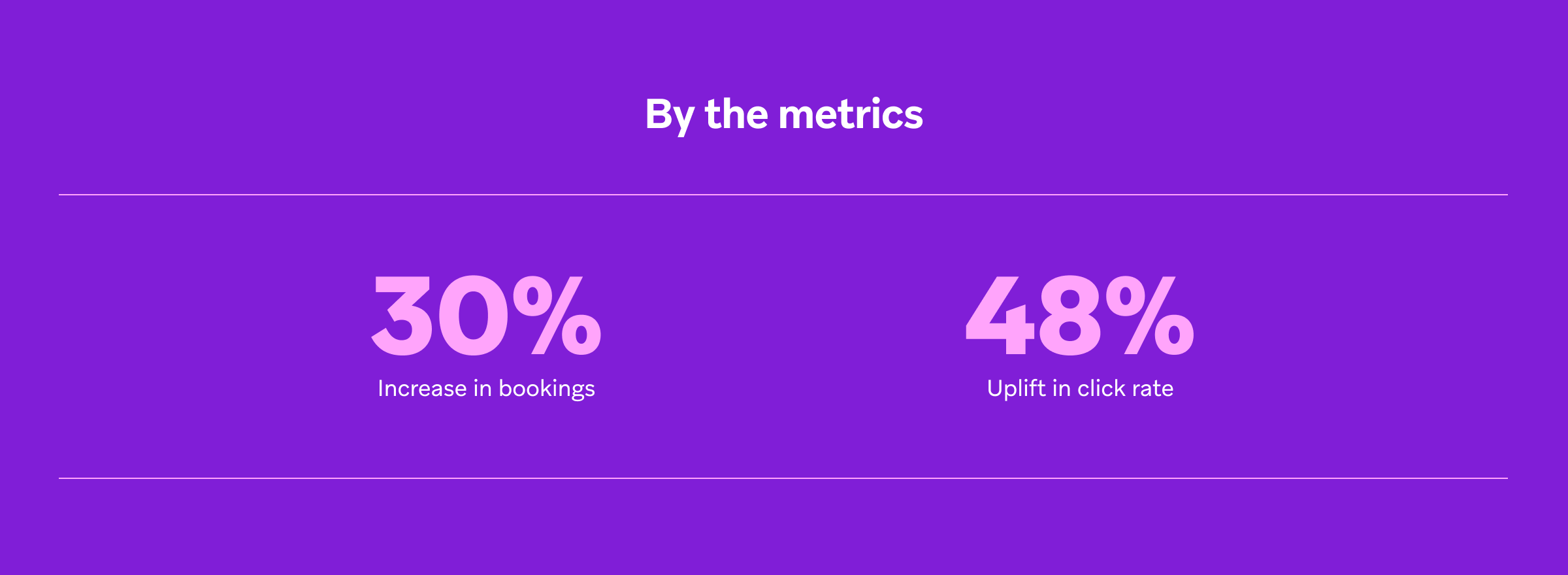
How immobiliare.it increased real estate agent interactions by 16% and boosted retention by 28% with personalized alerts
As a leading name in the EU real estate market, Immobiliare.it is committed to transforming the way people find their dream homes. Recognizing that the process of buying or selling a home is unique to each individual—and often complex—they strive to provide a seamless, stress-free experience that simplifies every step.
At the heart of their customer engagement strategy is understanding what each user wants and needs. To create a more intuitive and engaging experience, Immobiliare.it identified a key challenge: keeping users informed about new listings without overwhelming them with notifications. Their solution? A personalized, data-driven approach that delivers relevant updates at the right time helps users stay engaged, informed, and excited throughout their home search
The problem
Immobiliare.it wanted to deliver more personalized content and messaging tailored to each user's journey—fueling a seamless, engaging experience throughout the home-buying process. To do this, they needed a way to adapt communications based on user behavior while keeping engagement consistent across channels.
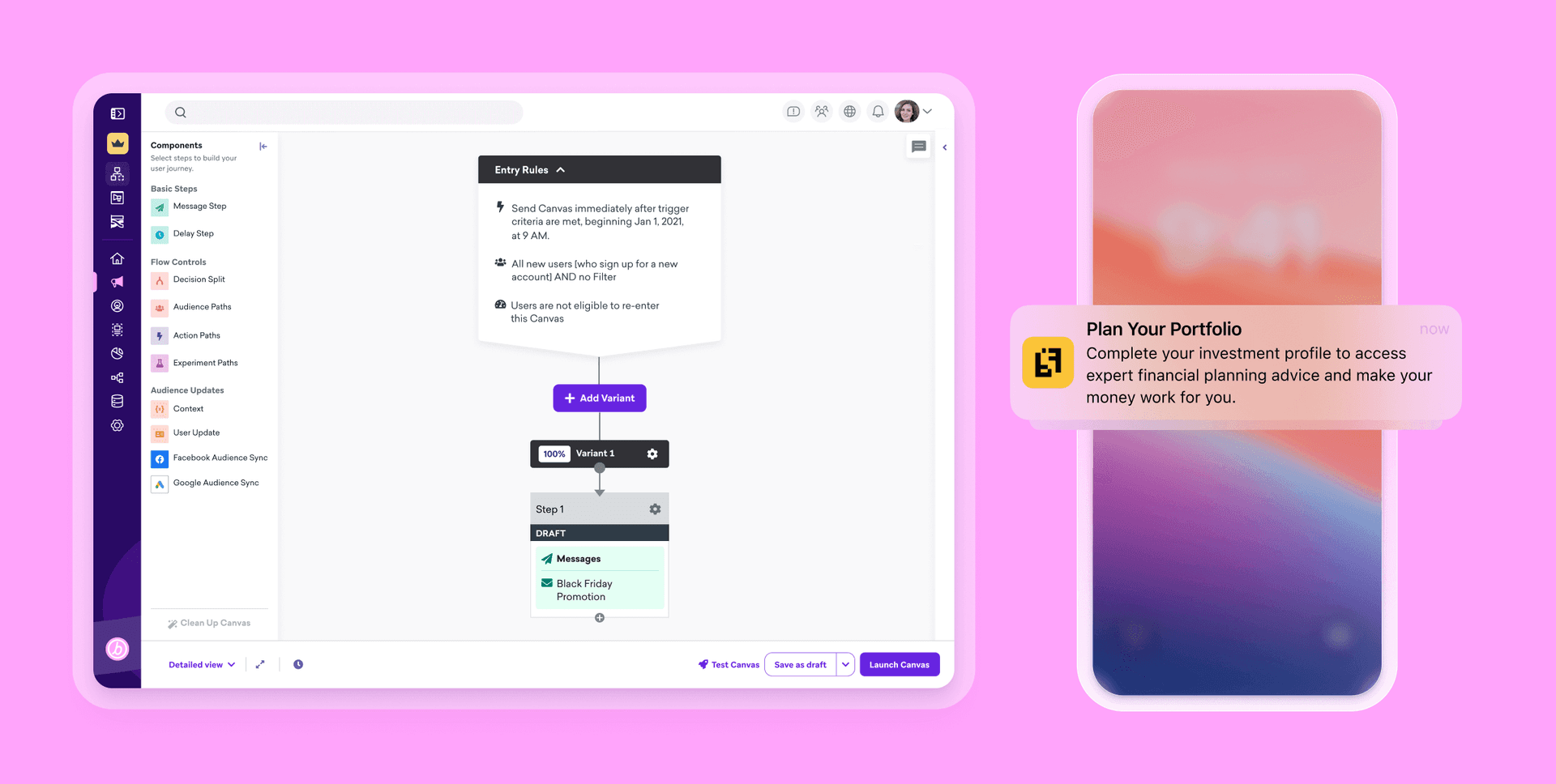
The strategy
Using Braze Canvas, they built personalized cross-channel flows that alerted customers to new listings on their preferred channels. By orchestrating messaging across touchpoints, they helped users stay informed and engaged—without feeling overwhelmed—throughout their search for the perfect home.
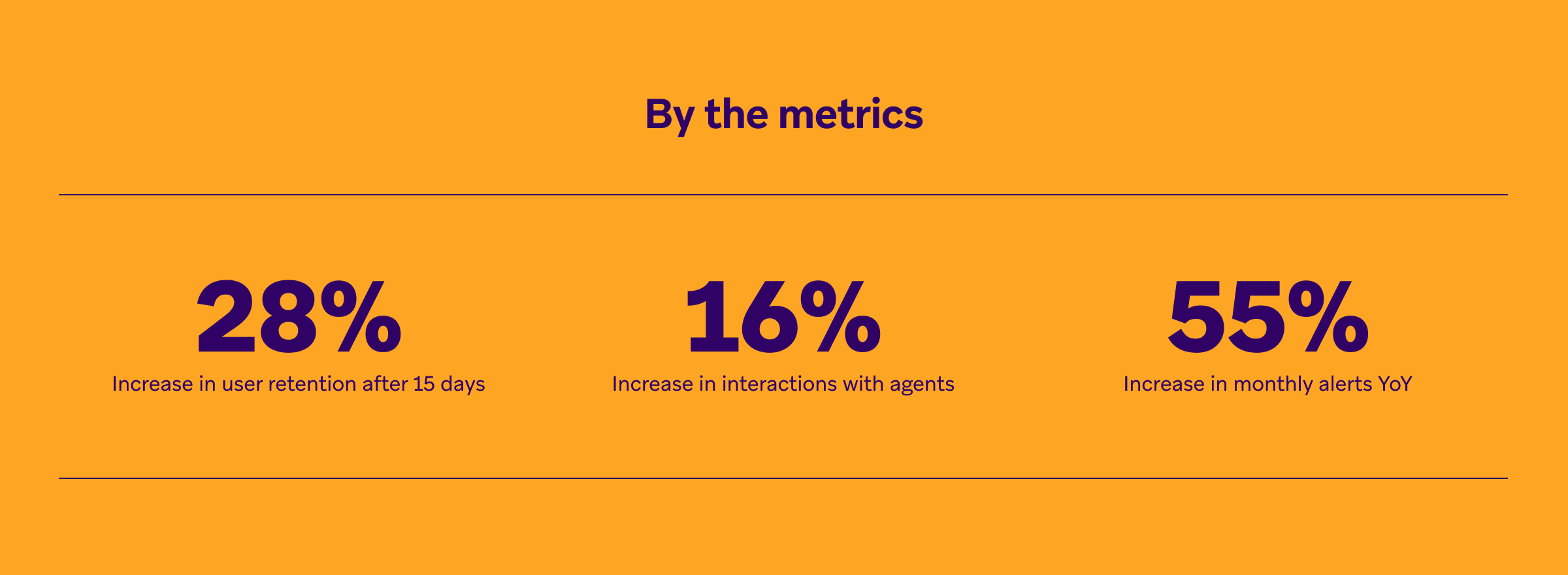
The results
Immobiliare.it saw a 16% increase in interactions with real estate agents and a 28% boost in user retention after 15 days among customers who activated instant alerts.
How Picklebet increased user sessions by 116% and boosted retention by 13% with personalized engagement
Picklebet is redefining the sports betting experience for the next generation of fans. Founded in 2019, this Australian-based company has quickly gained recognition for delivering a more engaging and entertaining approach to sports, esports, and racing.
In a competitive and fast-growing market, Picklebet has leveraged customer engagement as a key differentiator. While traditional betting brands rely on broad, expensive promotions, Picklebet takes a smarter, more digital-first approach—focusing on personalized experiences that maximize customer lifetime value (LTV) while reducing acquisition costs.
The problem
To stand out in a crowded market, Picklebet needed to enhance the customer experience in a way that would drive long-term retention and increase lifetime value. Instead of relying on mass promotions, they wanted to understand the user journey and deliver more relevant, tailored offers that kept users engaged.
The strategy
By integrating Braze with their proprietary betting and promotional engine, as well as tools they were already working with like Segment and Mixpanel, Picklebet built a powerful solution that allowed them to personalize and test offers based on individual user preferences. Through a mix of in-app messaging (IAM), SMS, email, and push notifications, they delivered the right promotions to the right users at the right time.
Their implementation also gave the marketing team more control—allowing them to dynamically adjust the content users see within the app via Braze. This meant they could offer VIP customers exclusive betting markets, with high-value users receiving an experience tailored to their interests.
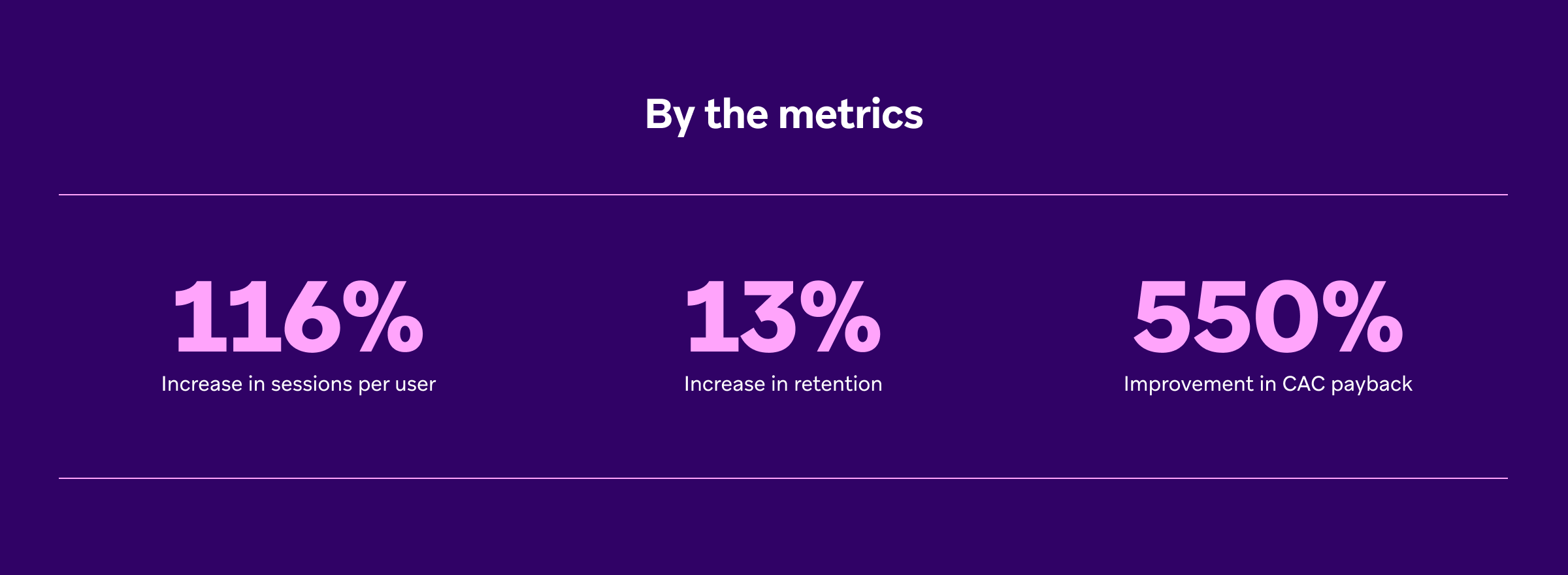
The results
By revamping its cross-channel messaging strategy, Picklebet achieved:
- A 116% increase in sessions per user, driving higher engagement
- A 13% boost in retention, increasing customer lifetime value
- A 550% improvement in CAC payback periods, dramatically reducing acquisition costs
Challenges of marketing orchestration campaigns and how to overcome them
For many brands, siloed systems, disconnected tools, and fragmented customer insights make seamless marketing orchestration a challenge. Here are some of the most common roadblocks and how to solve them.
1. Breaking down data silos to unify your customer insights
When data is scattered across different channels and databases, it becomes nearly impossible to analyze, segment, and activate it effectively. Each team may have its own system for collecting and storing data, making integration difficult without a standardized approach to data governance.
The solution? To eliminate data silos, brands need a centralized system that connects and unifies customer insights across departments. This means teams all have access to the same real-time data, creating a foundation for smarter, more cohesive campaigns.
2. Making data from different tools and sources accessible across teams
If each department is only using team-specific tools, customer data gets stuck in silos. Without cross-team visibility, marketing orchestration becomes disjointed, leading to generic, ineffective campaigns.
The best way to eliminate blind spots is by leveraging first-party data collected across multiple touchpoints in real time. A platform like Braze that can:
- Connect to all customer data sources
- Audit and validate data for accuracy
- Organize insights into a single, accessible view
When every team has a unified perspective, they can collaborate more effectively and create better, more personalized customer experiences.
3. Getting a single view of all customer interactions
A unified customer view is essential for successful marketing orchestration—but centralizing data manually is nearly impossible. With customer insights spread across platforms, brands struggle to get a complete picture of their audience.
What this can lead to is disjointed and irrelevant messaging. Like this:
- You’ve been using this personal finance app for four years. But even though you only ever engage with this company on mobile, they just keep sending you the same email, asking you to download their app.
- You bought a new fondue pot last month and already gave it a five-star rating, but still the retailer you purchased from keeps sending you abandoned cart messages—like you’re somehow going to buy it again. You’re one of their best customers, and they don’t even know it.
Instead of exporting and standardizing data manually, brands need a system that automatically consolidates customer interactions from all sources. This means your marketing tools receive complete, accurate data, making it possible to run truly personalized campaigns at scale.
4. Orchestrating customer journeys across channels at scale
Once customer data is centralized and accessible, the next challenge is activating it across multiple touchpoints. Omnichannel experiences drive engagement, but managing campaigns across different platforms can be complex—especially when each channel has its own marketing tool.
Brands need a platform that connects all marketing channels, allowing them to automate and orchestrate campaigns seamlessly across email, SMS, push notifications, and more—all from one place.
Learn how you can deliver meaningful, customer-centric campaigns that have the power to drive business result.
Forward-Looking Statements
This blog post contains “forward-looking statements” within the meaning of the “safe harbor” provisions of the Private Securities Litigation Reform Act of 1995, including but not limited to, statements regarding the performance of and expected benefits from Braze and its products. These forward-looking statements are based on the current assumptions, expectations and beliefs of Braze, and are subject to substantial risks, uncertainties and changes in circumstances that may cause actual results, performance or achievements to be materially different from any future results, performance or achievements expressed or implied by the forward-looking statements. Further information on potential factors that could affect Braze results are included in the Braze Annual Report on Form 10-K for the fiscal year ended January 31, 2025, filed with the U.S. Securities and Exchange Commission on March 31, 2025, and the other public filings of Braze with the U.S. Securities and Exchange Commission. The forward-looking statements included in this blog post represent the views of Braze only as of the date of this blog post, and Braze assumes no obligation, and does not intend to update these forward-looking statements, except as required by law.
FAQs on campaign orchestration
Marketing orchestration turns strategy into action by seamlessly connecting customer interactions across channels. For example, when a contact submits their email on your website, automation triggers an onboarding campaign. If they engage with an email, orchestration software adds them to a custom audience for targeted ads. With real-time tracking in your CRM, you can serve up personalized offers at the right moment—maximizing engagement and conversion opportunities.
Marketing orchestration software centralizes marketing tools, teams, and workflows, making it easier to plan, execute, and optimize campaigns. By unifying functions like project management, asset storage, and performance tracking, it streamlines processes, accelerates execution, and provides deeper insights into ROI.
Marketing orchestration connects channels, personalizes messaging, and aligns teams to create a seamless customer journey. By streamlining marketing efforts, it boosts engagement, improves collaboration, and drives revenue through more relevant, data-driven experiences.
Related Tags
Be Absolutely Engaging.™
Sign up for regular updates from Braze.
Related Content
View the Blog
How AI Decisioning Transforms Marketing (A Complete Guide)

Team Braze

AI decisioning cheat sheet: How to crawl/walk/run with BrazeAI Decisioning Studioᵀᴹ

Team Braze

A day in the life of a data scientist on the BrazeAIᵀᴹ forward-deployed engineering team
